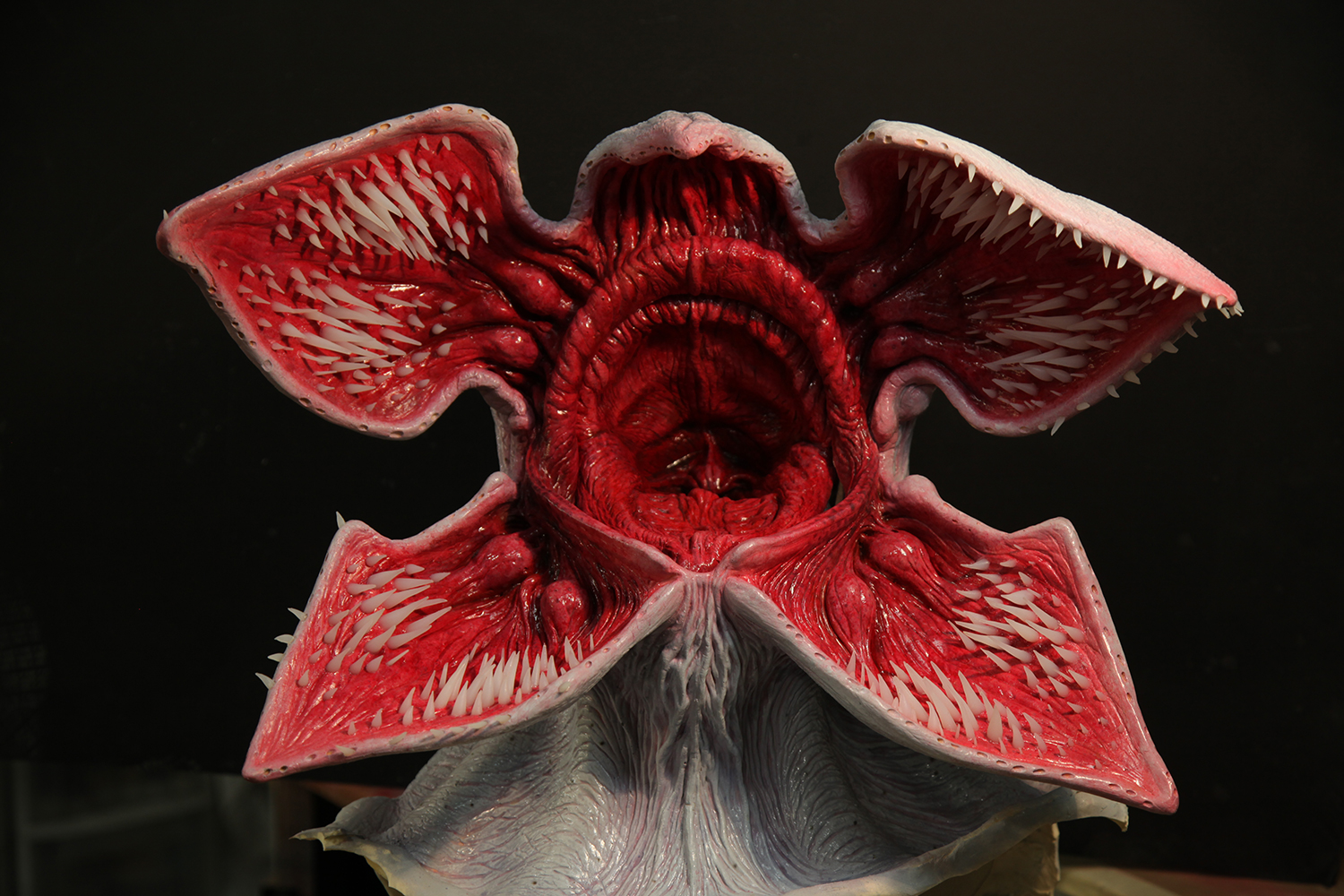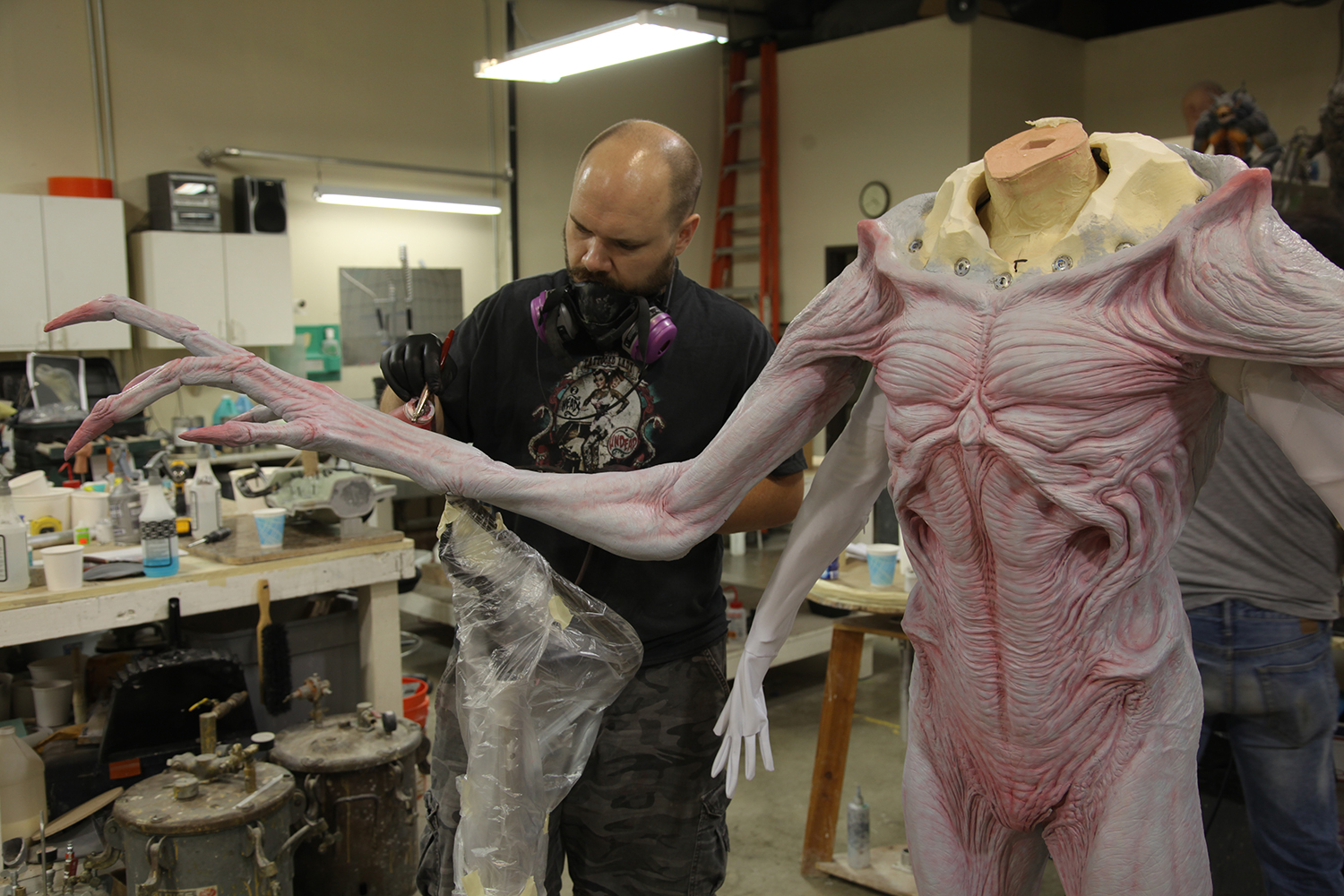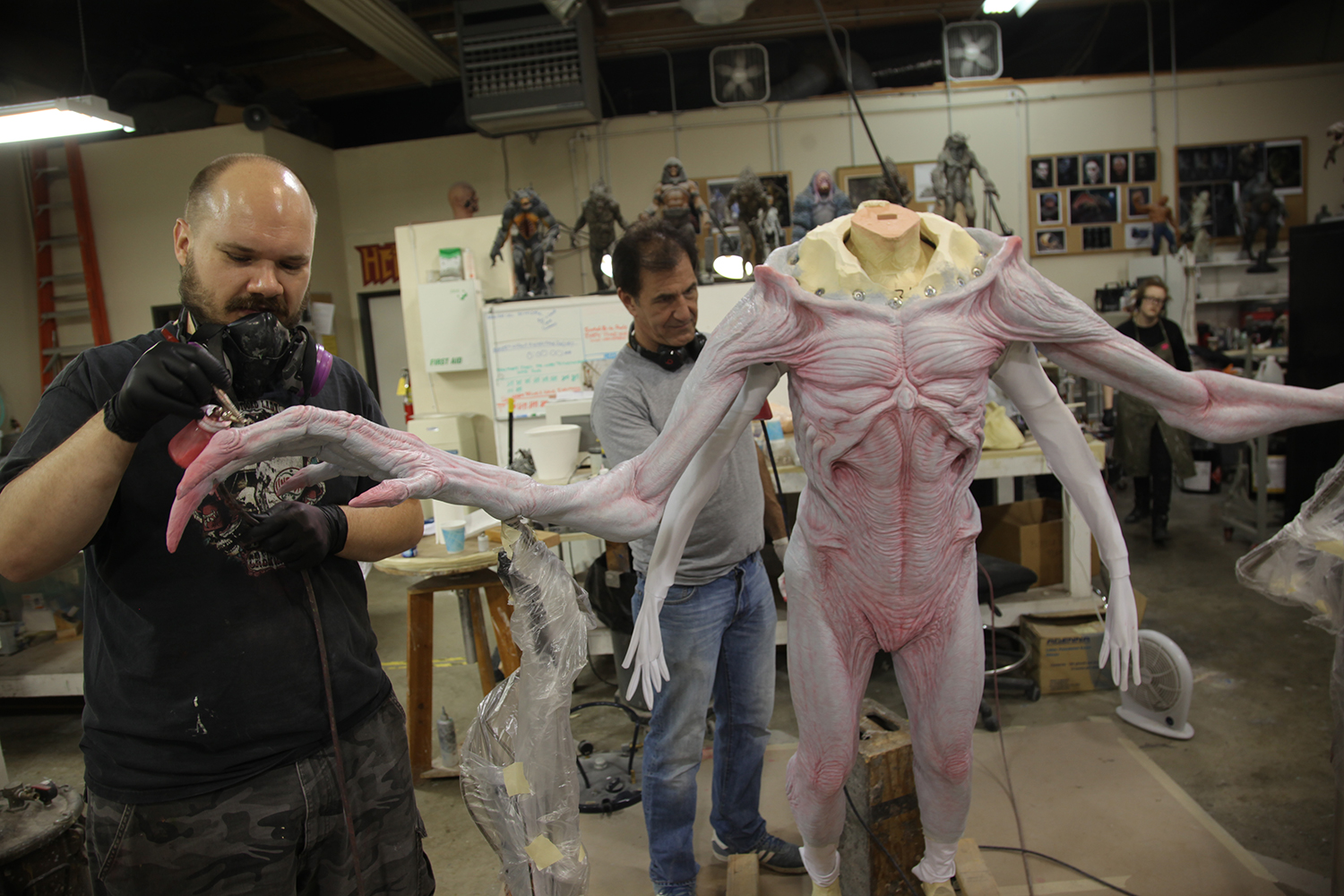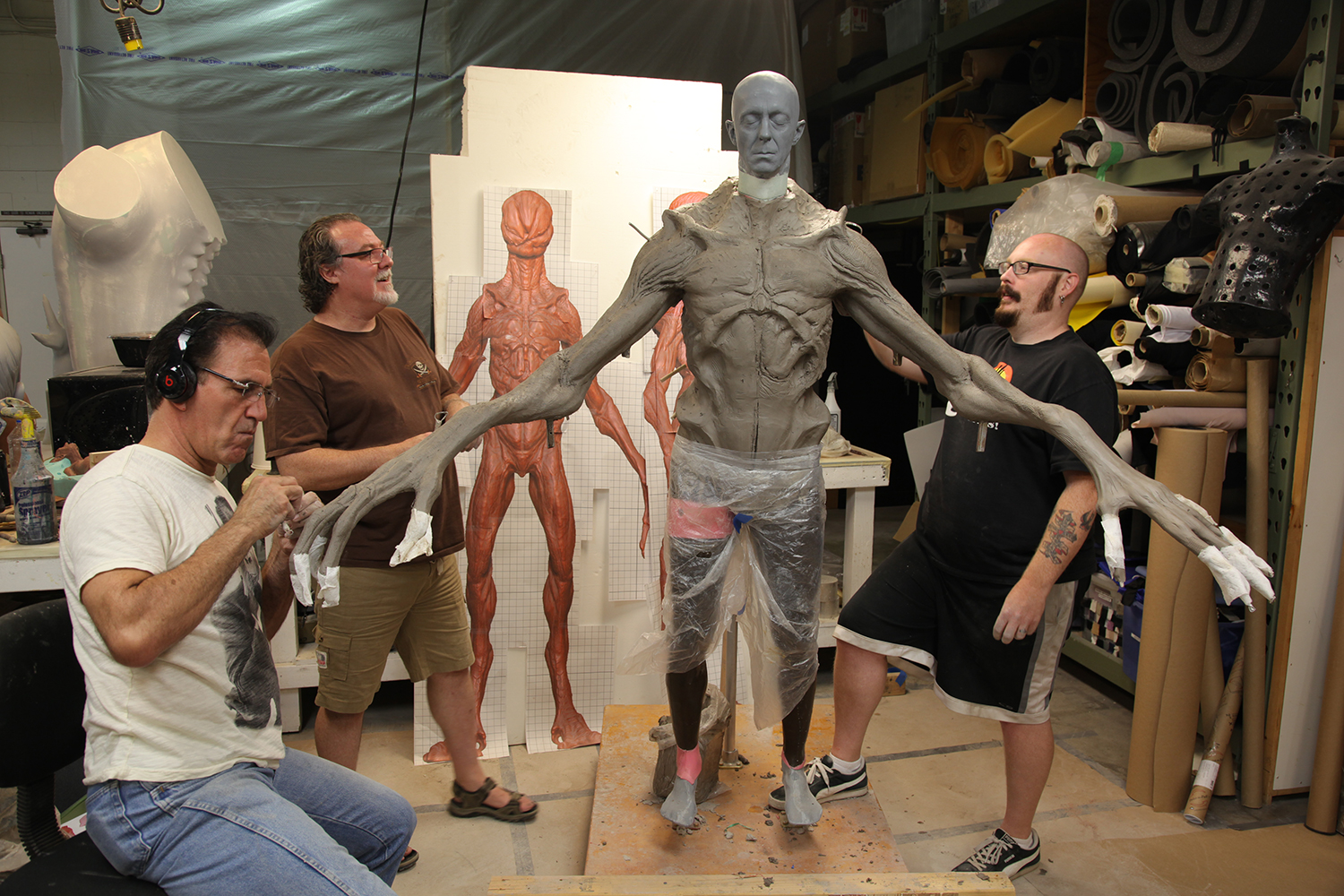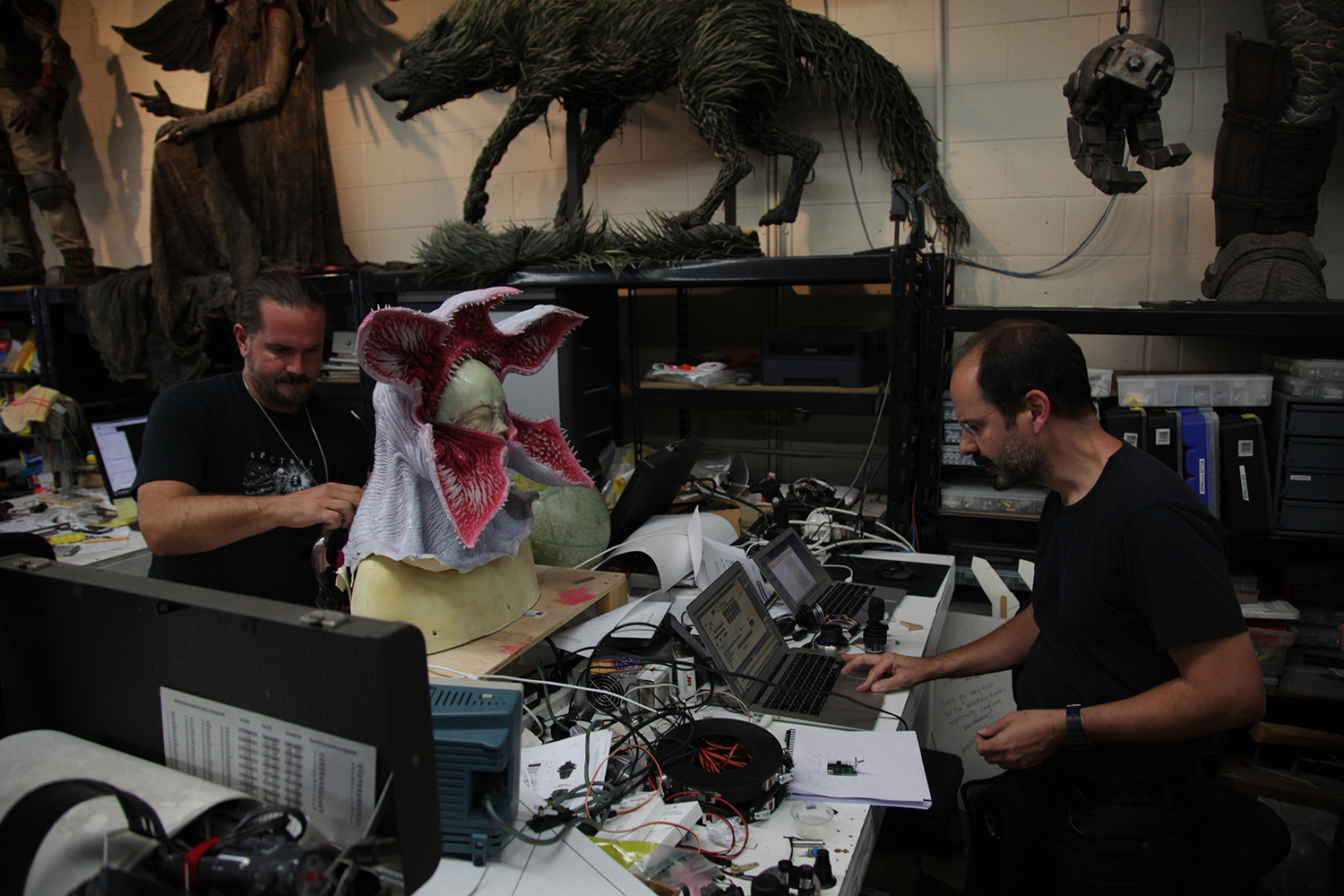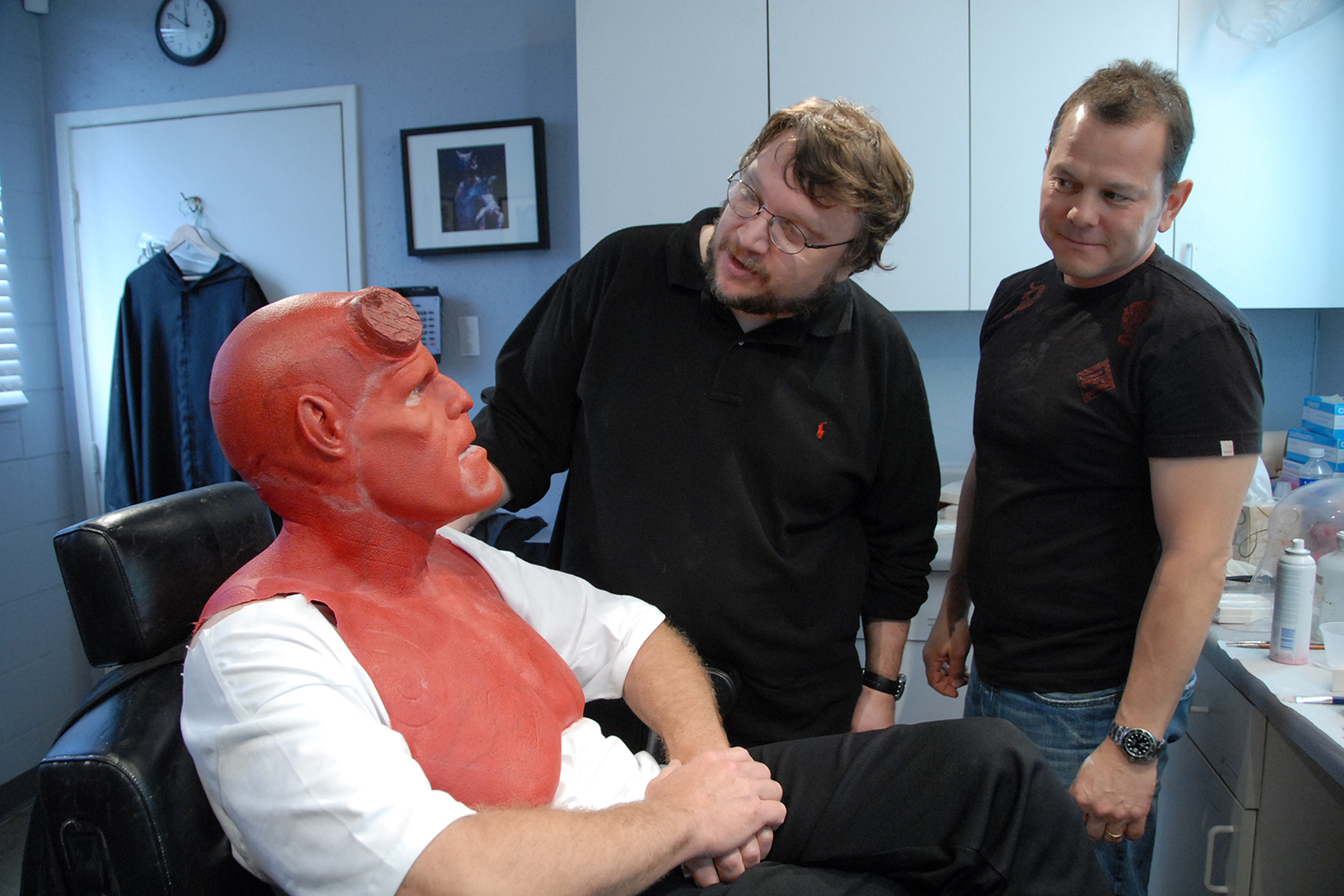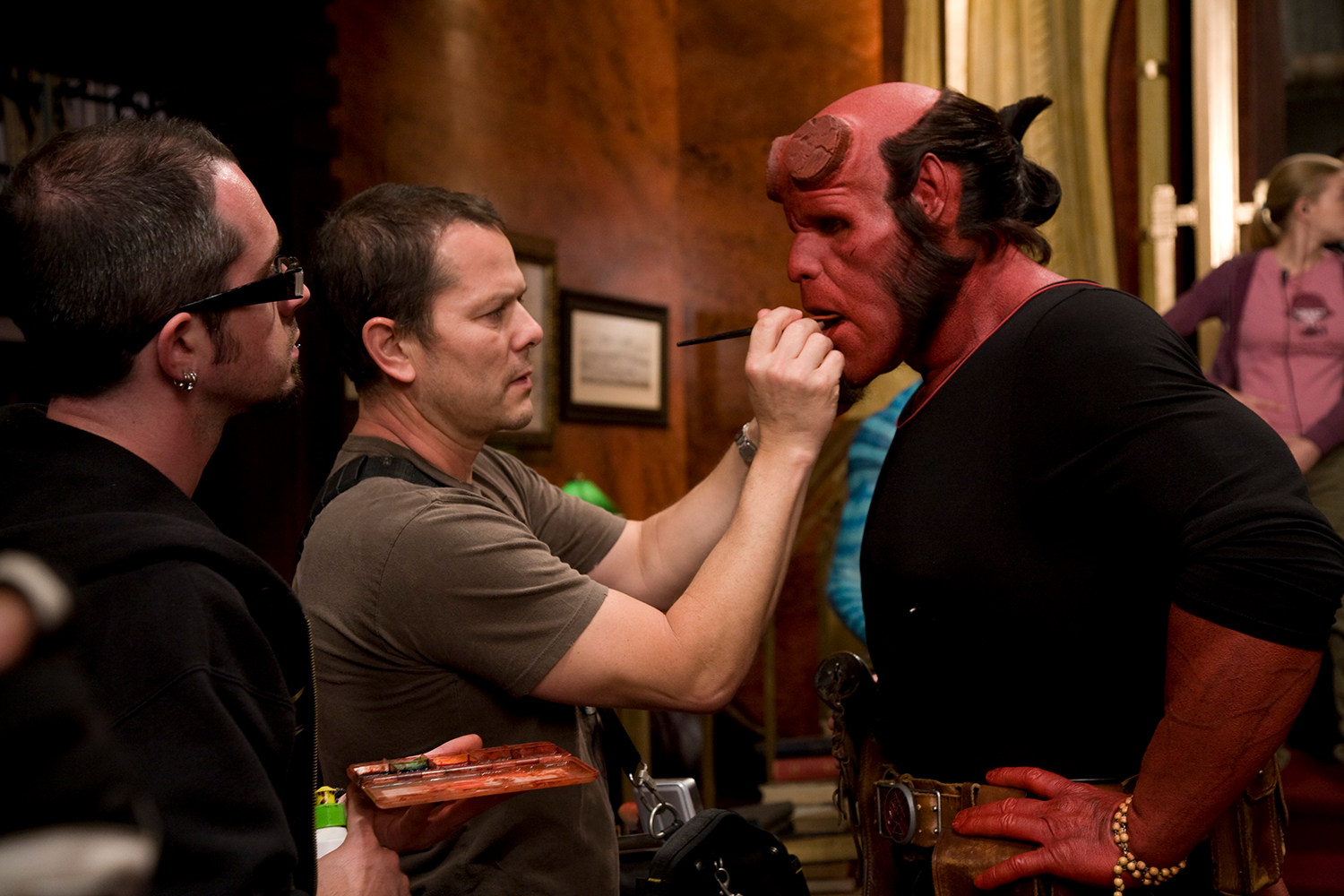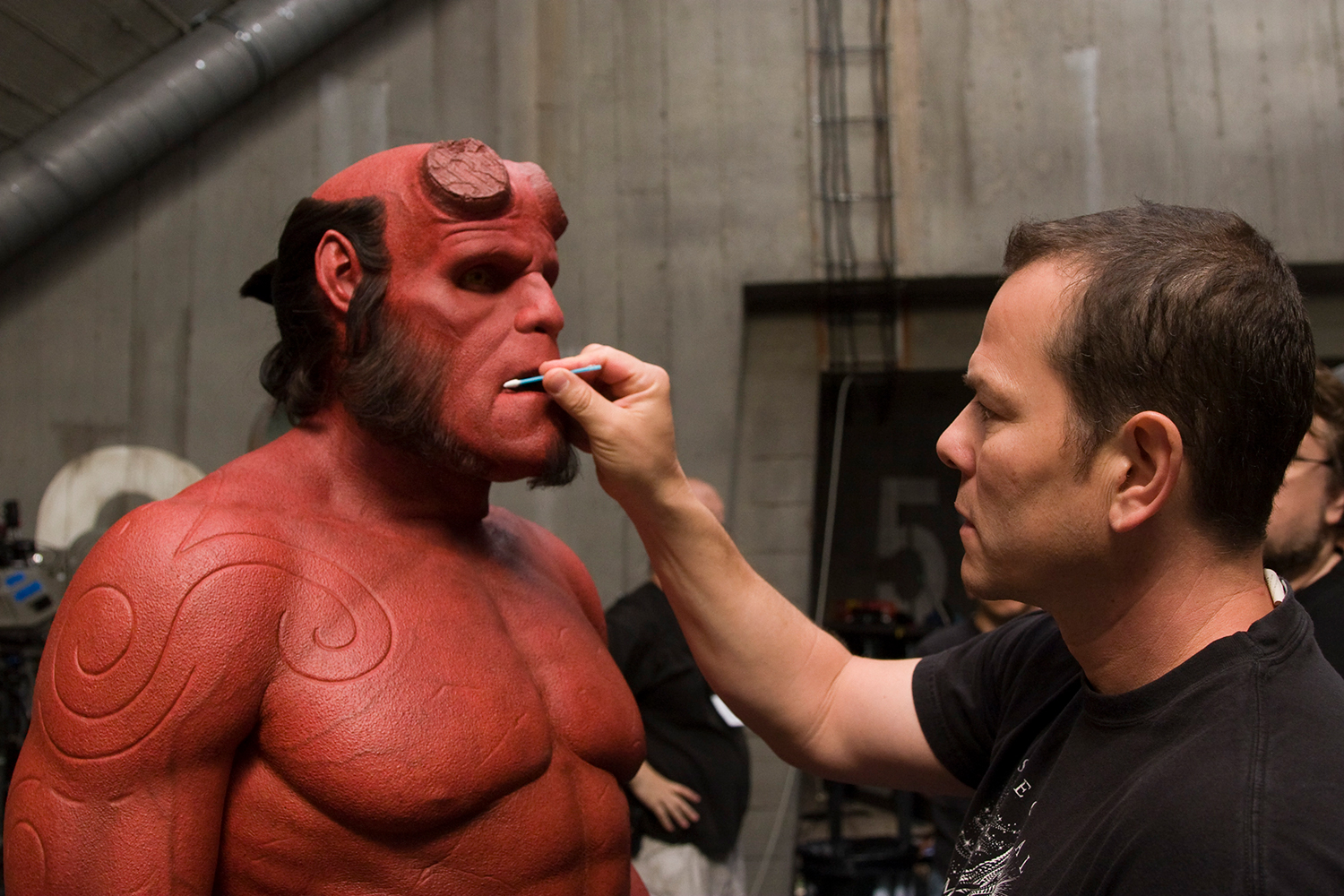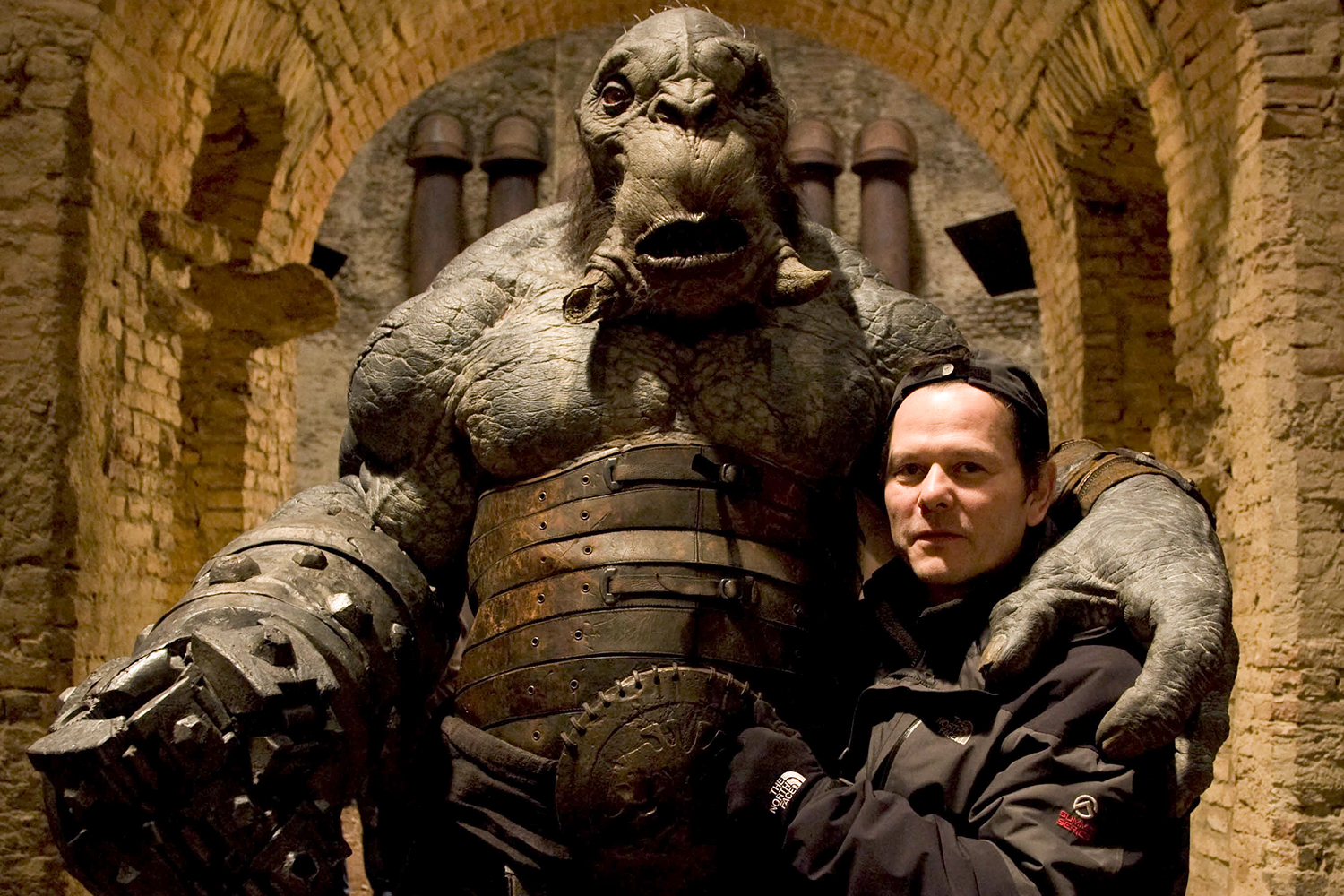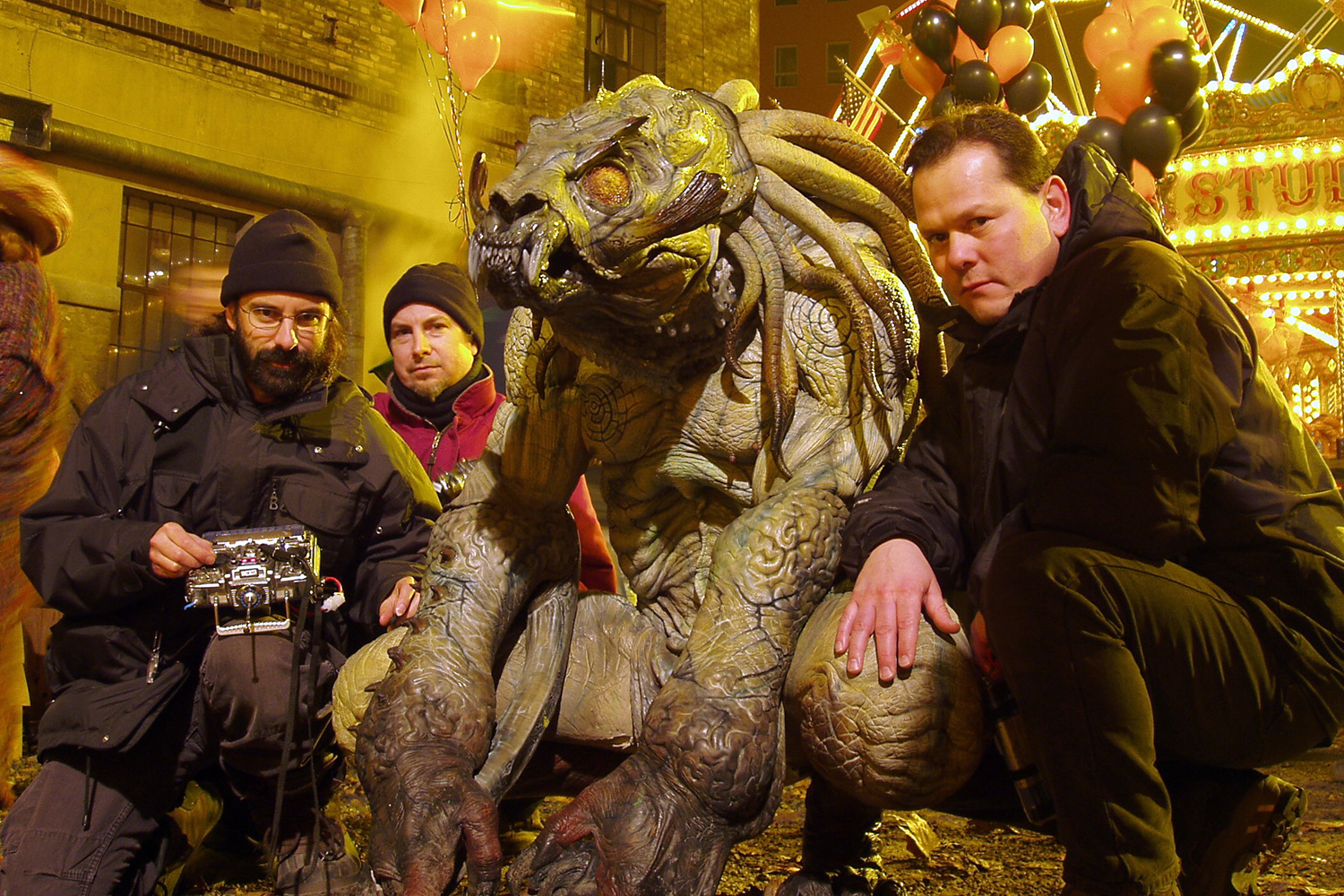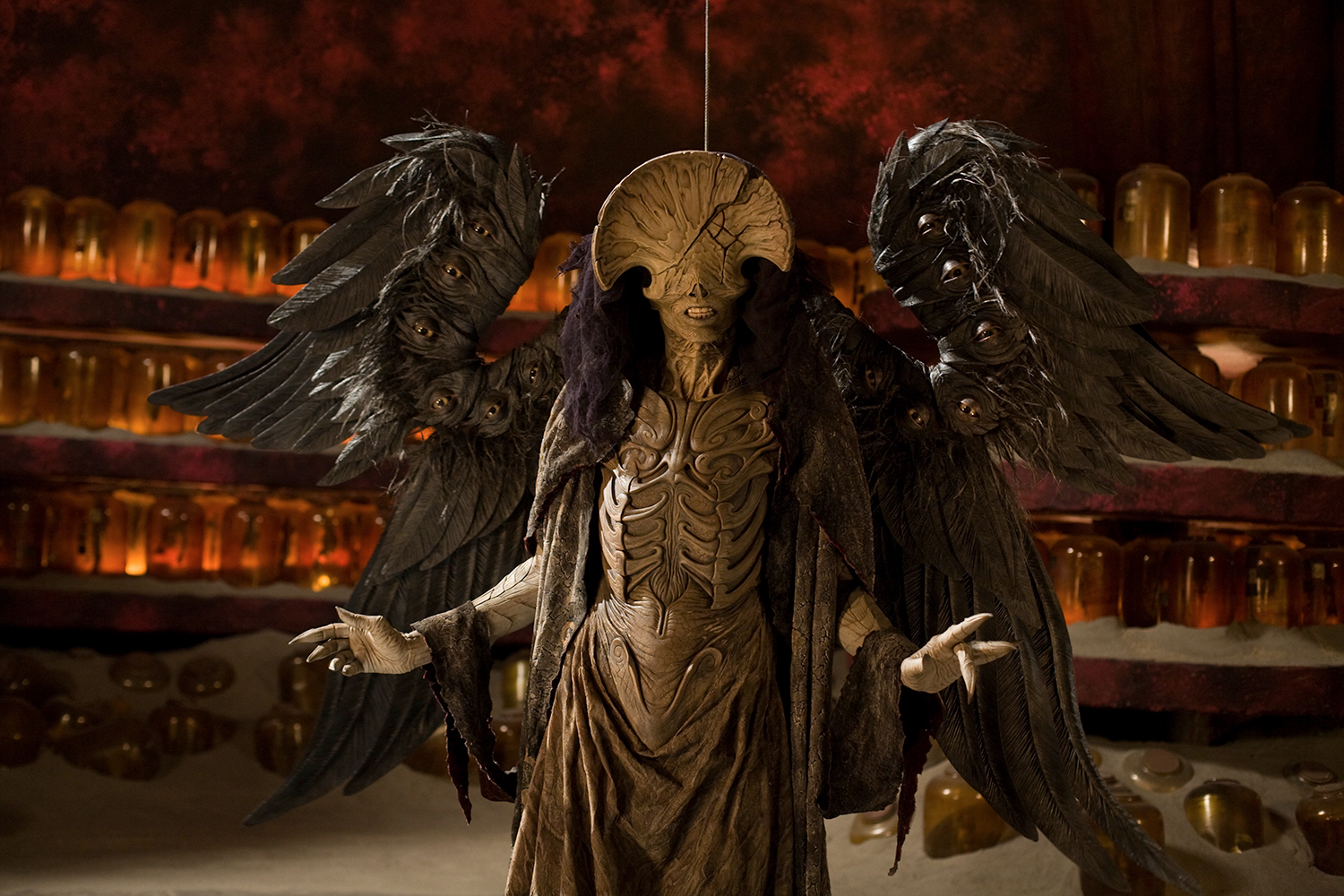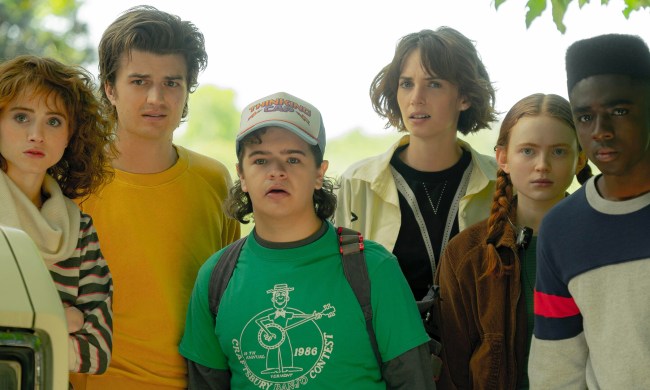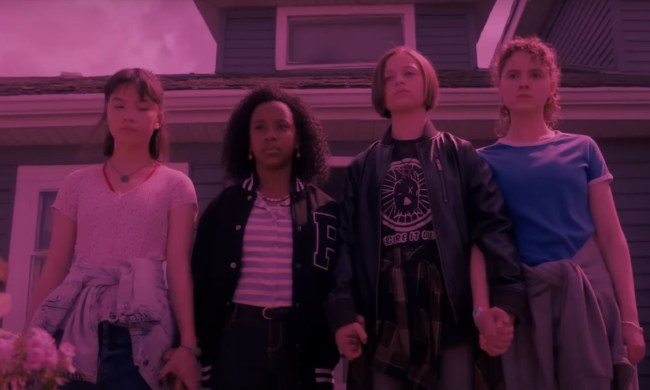In recent years, Netflix has proven itself to be a friendly environment for creative creatures — and not just the human kind. Two of the streaming service’s most popular original series, Stranger Things and Lost in Space, feature impressive nonhuman characters that have fueled nightmares, inspired countless costumes, and served to make their respective shows much more memorable.
Oscar-nominated creature effects studio Spectral Motion was tasked with developing the makeup and practical effects for two of the most iconic creatures to appear on television in recent years, the nightmarish Demogorgon from Stranger Things and the fully realized character in the cosmic drama playing out in Lost in Space, Robot.
Digital Trends spoke to Spectral Motion president, and artistic director Mike Elizalde (who co-founded the studio with his wife and business partner, Mary) about his studio’s work on both creatures — which largely relied on practical effects enhanced with digital elements — and how the team created these memorable characters.
Digital Trends: With Robot, how much of what happens on the set during a scene — with an actor in the robot suit — is what we end up seeing on the screen?
More Netflix News
- ‘Stranger Things’ season 3 is coming! Here’s everything we know so far
- Some of the best (and weirdest) ‘Stranger Things’ theories for season 3
- More danger, Will Robinson: Netflix renews ‘Lost in Space’ for a second season
Mike Elizalde: In the case of Lost in Space, I would say probably 85 percent of the performance you’re seeing of the robot comes from what occurs on set. There are some essential digital enhancements to the suit that are added … mostly making negative space where there isn’t negative space so that it feels like you’re looking through a machine instead of looking at a solid person inside a suit. That was a great decision made by the production team, and we suggested it early on as well. We find that the most effective way to create an illusion is to combine digital and practical where it makes sense.
Did anything change about Robot from the character’s initial design in order to accommodate using an actor in a suit and making it a practical effect?
No, the intent was always to execute it as you see it in the series. As far as what our plan was when we set out, what you see on screen is exactly what we intended, and what the digital effects team and production teams intended. The plan was formulated early on and we just went in and executed it.
What about the design of the character itself? Nonhuman characters tend to evolve over time from the conceptual stage, so what sort of evolution did Robot go through?
We didn’t really have a final design until a little later in the process of the design phase. Our friend Aaron Sims recommended us for the job and is a colleague of mine from our days at Rick Baker’s studio. We didn’t have the design sussed out until later in development, but when it was being discussed, [there was discussion of] what the robot should look like, how much of a nod we want to include to the old Lost in Space show, and that sort of thing. Finally, the decision was made to make him anthropomorphic, which would make him much more relatable — particularly for Will Robinson — in the show.
What did you think when you first saw the design for Robot?
My first impression of it was that it was a cool-looking robot and would be a lot of fun to make, but I wondered whether the fans would embrace it. My concerns were definitely put to bed the very first time it made its debut, though. The response was wonderful.
The response was certainly positive, but there was one aspect of it that was a bit surprising. There was a pretty vocal portion of the audience who found Robot … sexy? What went through your mind when you saw people debating Robot’s physical attractiveness?
I thought it was hilarious. It was kind of charming that people thought the robot was sexy, and that there was a particular demographic who found the robot’s hindquarters to be … quite attractive. So we thought this was really cool because it’s successful on a whole different level that we really didn’t anticipate.
So you didn’t set out to make a sexy Robot?
It wasn’t the intent, but we’re glad that was the byproduct.
Robot took on some different looks throughout the first season, and it feels like we haven’t seen the last of the forms he’ll take. Without revealing any spoilers, is there more to look forward to with Robot and your work on it in season 2?
Without tipping the hand too much, we are definitely involved in the second season. We can’t describe any specifics, of course, but there are a lot of fun surprises in store. The series is really strong and it has some great dynamics between the characters.
Shifting gears to Stranger Things, how did you get involved with the show and the Demogorgon creature?
Once again, this was an Aaron Sims referral. So we’re two-for-two with Aaron right now. He brought us into the equation after the design was figured out between his company, the production company, and [show creators] the Duffer Bros.
We were shown the design. We had some modifications to make in order to make it work, as the Duffers had wanted it to be a practical effect as much as possible. So we did some modifications to the design to get an actor into the suit. Our actor was Mark Steger, who performed beautifully in the suit and did some wonderful stuff on the show. The kids on the show were incredibly enamored with the creature. They loved coming over and poking at it and looking at it.
Did the Demogorgon evolve and change much from those early concept designs? What was the development process like on it?
Every project is a learning process for everyone involved. Every single thing we do is essentially a research and development project because we’re building something that’s never been built before. So the learning curve is always steep at the very beginning of the process, and then as we hit our stride it becomes something new that we own. There’s a lot of technology that’s developed to come up with certain movements or certain controls, and there’s always an evolution that takes place. The Demogorgon is no exception.
There’s an amazing video you released that shows how the Demogorgon’s “mouth” flutters when it opens. How did you develop that look for the monster’s mouth-opening visual?
The actual physical movement is a product of the team at Spectral, led in the animation department by Mark Setrakian. We’re very fortunate to have his great mind involved because he brings a lot of performance value to the occasion. It’s one thing to be able to design mechanisms and use a radio control stick to make it move, but it’s quite another thing to design the mechanisms based on performance first. In his mind, he visualizes a performance and then he creates the mechanisms and systems that will deliver that performance. It’s a very artistic, choreography-based process for him.
You mentioned your work with Rick Baker’s studio, and Stranger Things has that ’80s vibe — an era that gave us American Werewolf in London and so many other classic films featuring Rick Baker’s creature effects. Did Stranger Things and the process of creating the Demogorgon feel like a project from that era from your side of things?
Absolutely. What we learned from working at Rick’s is that the quality of the product is the most important thing. The appearance, the performance, without those things you’re relegated to just an average effects studio. So yeah, it certainly does feel like something that would’ve come out of a studio like that. We’re very proud of the final product.
The Demogorgon has become a popular costume at conventions and during the Halloween season. How does that make you feel when you see people dressing up as one of your creations and putting their own spin on it?
It’s always flattering to see fans acknowledge the work you’re doing and make such a beautiful tribute to it. It’s satisfying to know that you’re an inspiration for someone to be creative. They’re learning from these experiences.
They could be the next generation of creature effects artists …
Yeah, exactly.
So what’s next for you and Spectral Motion?
We have a really fun thing happening with Guillermo del Toro that’s kind of a homecoming for us with him. [Editor’s Note: Spectral Motion received an Academy Award nomination for the studio’s work on Del Toro’s Hellboy II: The Golden Army.] Guillermo is producing the movie, and I’ll have to withhold the title for now, but we’re doing some Del Toro stuff we’re excited about.
What’s the project you’re still hoping to work on someday? Is there a story or creature or something you’d love to be involved with down the road?
The Lovecraftian demon in its purest form hasn’t really been explored, and that’s something we all salivate over whenever the hint of that comes up. We were developing the At The Mountains of Madness with Guillermo several years ago and that project never came to fruition, but at some point in time that would be a real quintessential creature to dive into — or a set of creatures, really. The Lovecraftian mythology is so rich and so visually impactful.
Well, just as long as you don’t drive anyone insane with the sight of it …
[Laughs] Yeah, I love how Lovecraft skirts around describing the creatures in his stories by suggesting that to gaze upon them would be to invite madness. But yeah, those creatures are just in our blood when it comes to creature effects and makeup.










